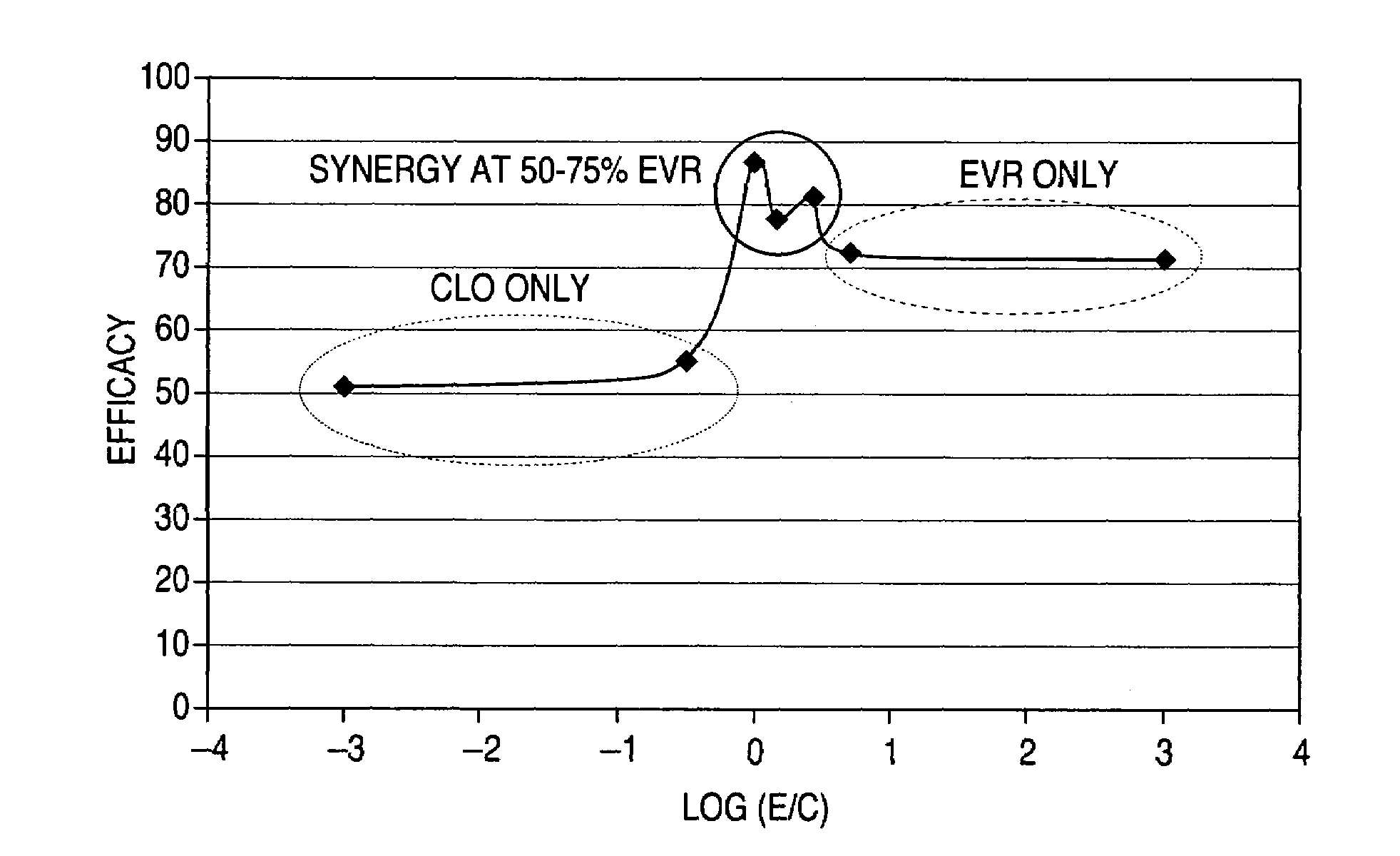Anti-proliferative and anti-inflammatory agent combination for treatment of vascular disorders with an implantable medical device
a medical device and anti-inflammatory agent technology, applied in the field of drug combination, can solve the problems of high risk, high morbidity and mortality associated with vascular plaques, and prone to thrombosis of atherosclerotic plaques
- Summary
- Abstract
- Description
- Claims
- Application Information
AI Technical Summary
Benefits of technology
Problems solved by technology
Method used
Image
Examples
example 1
Porcine Implant Study
[0087]Described in this example is a 28 day porcine implant study that compared the 200 μg / cm2 dose Lemans with a clobetasol-only delivery stent, an everolimus-only stent, and an everolimus-clobetasol combination drug delivery stent. The study was performed using three different drug delivery stents, Arm 1, Arm 2, and Arm 3. Arm 1 is a Lemans stent (a stent available from Guidant based on PVDF-co-HFP) that included 105 μg everolimus and used. as a control. Arm 2 was loaded with 185 μg clobetasol only, with no everolimus. Arm 3 is loaded with 105 μg everolimus and 80 μg clobetasol.
[0088]The Arm 1, Arm 2, and Arm 3 stents were implanted in a 30% overstretch model. Overstretch model refers to the technique of overexpanding the animal arteries by up to 30% (using the stent and balloon) over their natural diameter so that the stent is more likely to cause injury and thus greater restenosis. This sometimes helps differentiate between efficacy of various stent systems....
example 2
Porcine Implant Study
[0100]Described in this example is a 28 day porcine implant study that compared an everolimus-only stent, an everolimus-clobetasol combination drug delivery stent, and a clobetasol-only stent. The drugs were dispersed in a Solef polymer matrix, available from Solvay Solexis PVDF, Thorofare, N.J. The study was performed using three different drug delivery stents, Arm 1, Arm 2, and Arm 3. Arm 1 is Lemans stent (a stent available from Guidant based on PVDF-co-HFP) that included 64 μg everolimus with a drug-polymer ratio of 1:4.9, which was used as a control. Arm 2 is loaded with 64 μg everolimus and 32 μg clobetasol with a drug-polymer ratio of 1:4. Arm 3 was loaded with 32 μg clobetasol only with a drug-ratio of 1:4, with no everolimus. Table 5 shows the coating design of the stents used in this study.
[0101]The Arm 1, Arm 2, and Arm 3 stents were implanted in a 30% overstretch model. Nine samples of each Arm stent were implanted, one for each coronary artery. 24 h...
PUM
| Property | Measurement | Unit |
|---|---|---|
| temperatures | aaaaa | aaaaa |
| temperatures | aaaaa | aaaaa |
| size | aaaaa | aaaaa |
Abstract
Description
Claims
Application Information
 Login to View More
Login to View More - R&D
- Intellectual Property
- Life Sciences
- Materials
- Tech Scout
- Unparalleled Data Quality
- Higher Quality Content
- 60% Fewer Hallucinations
Browse by: Latest US Patents, China's latest patents, Technical Efficacy Thesaurus, Application Domain, Technology Topic, Popular Technical Reports.
© 2025 PatSnap. All rights reserved.Legal|Privacy policy|Modern Slavery Act Transparency Statement|Sitemap|About US| Contact US: help@patsnap.com



